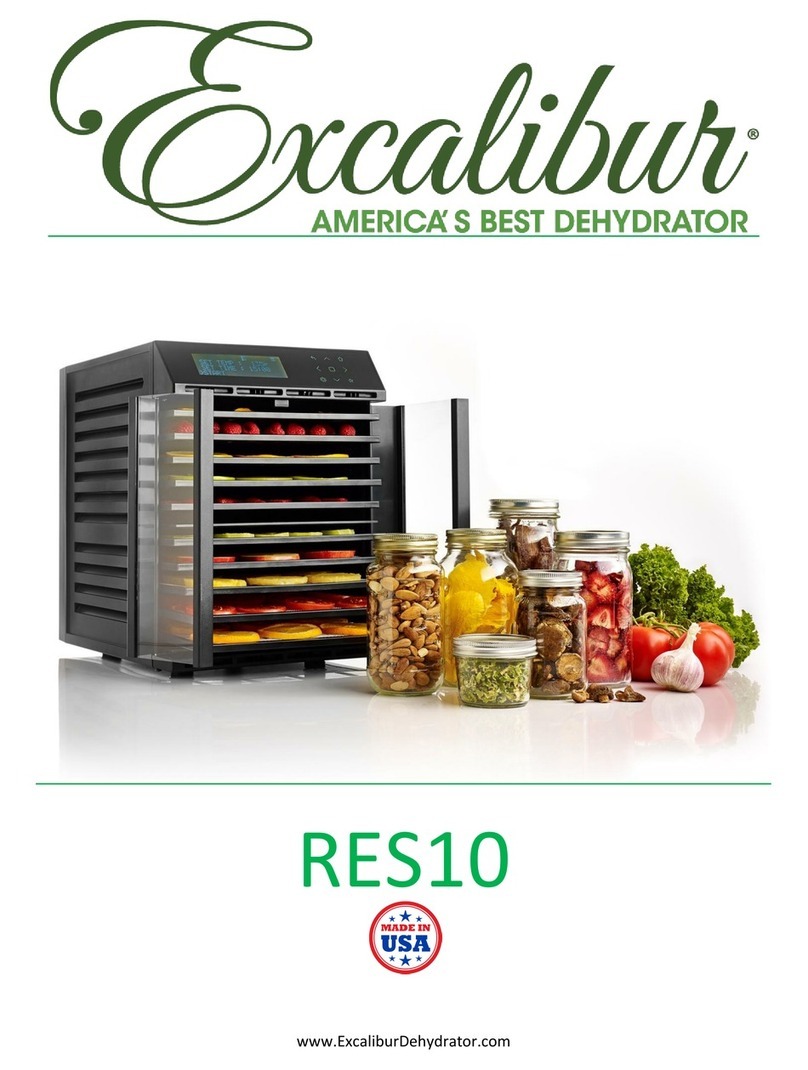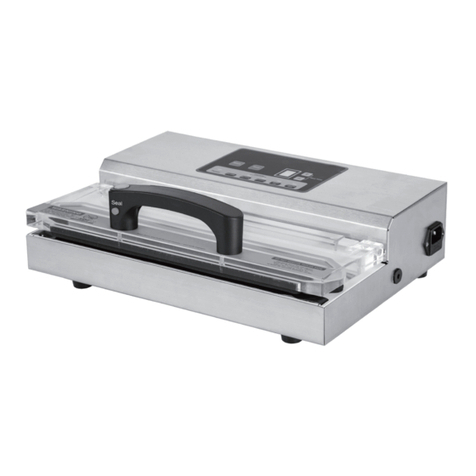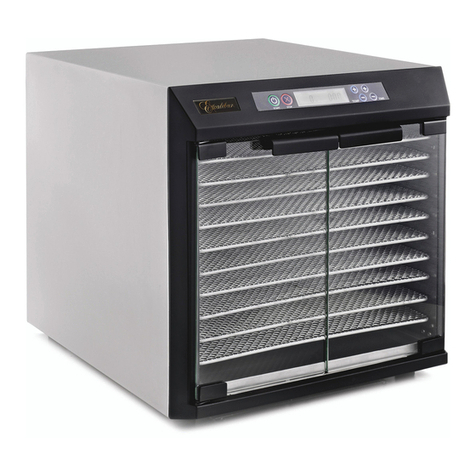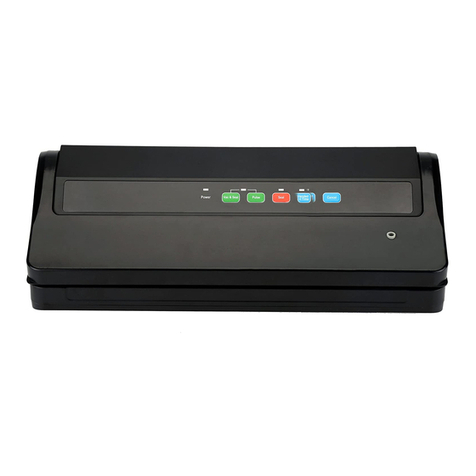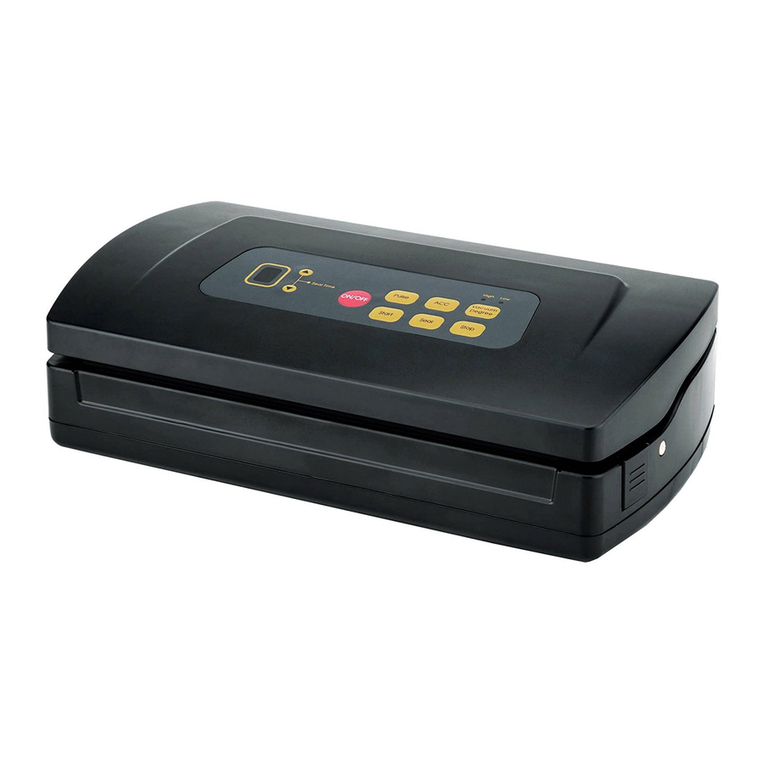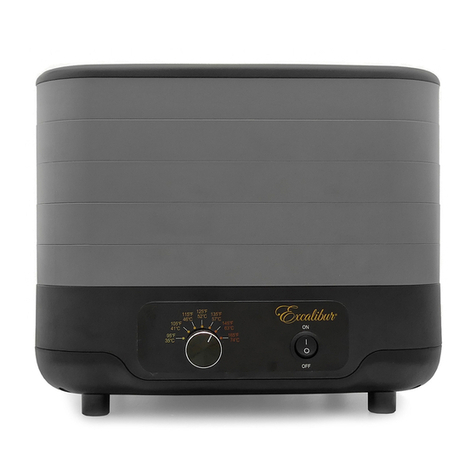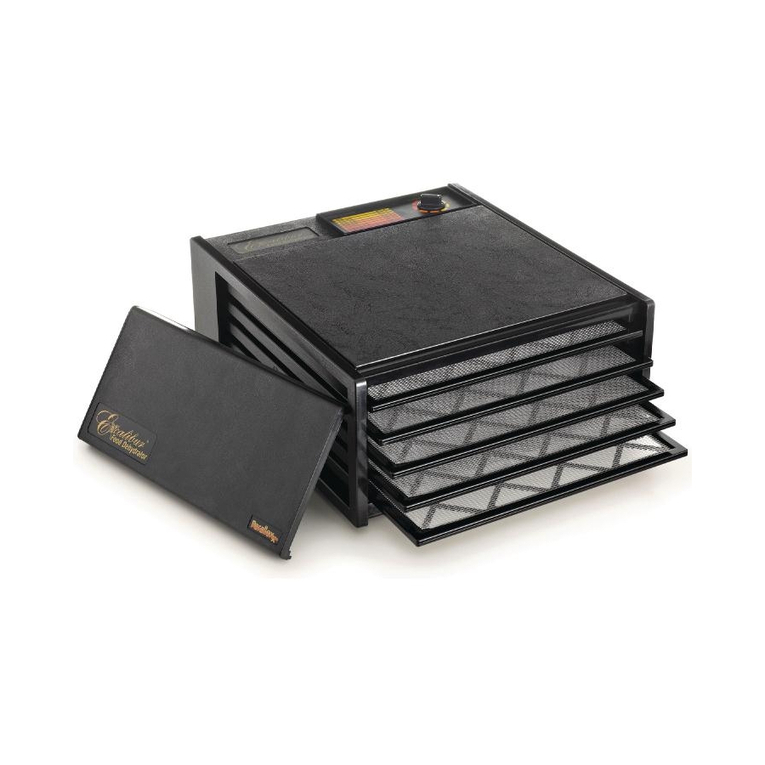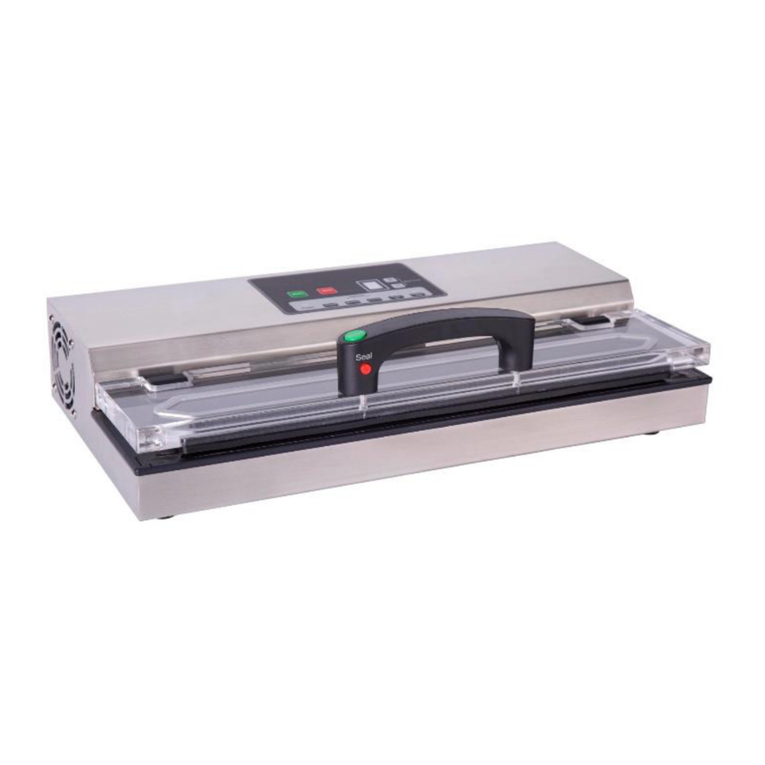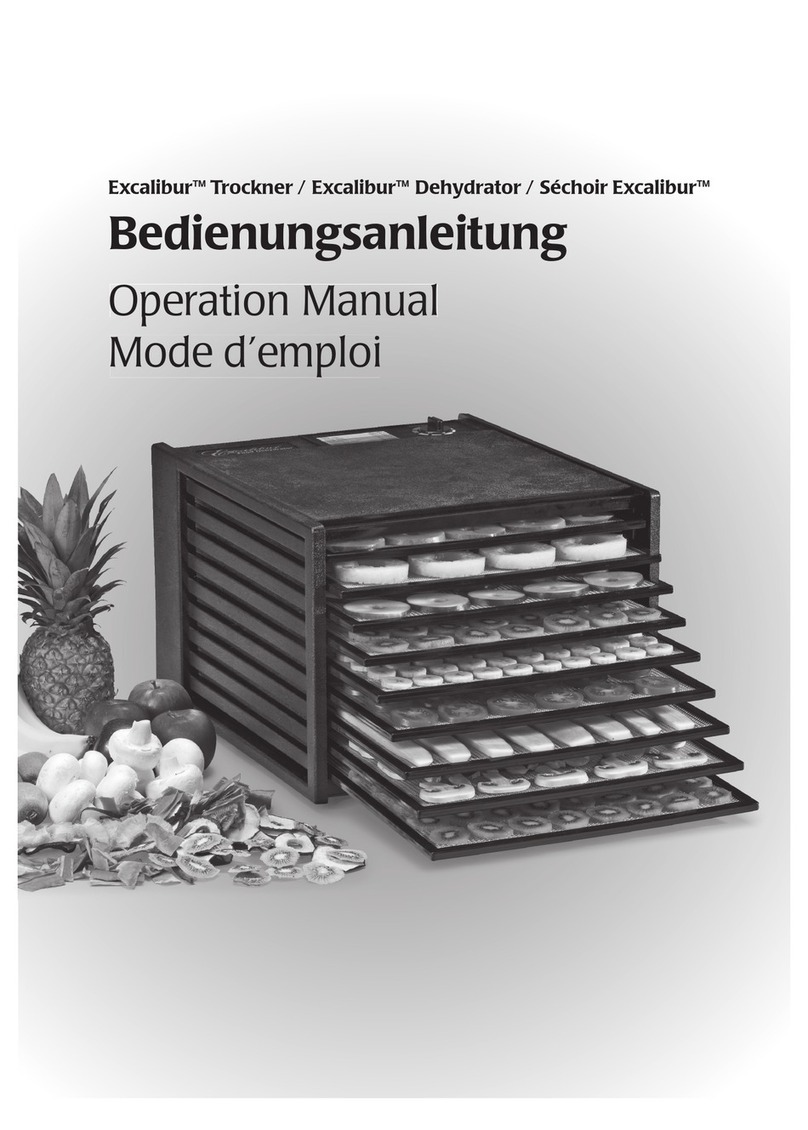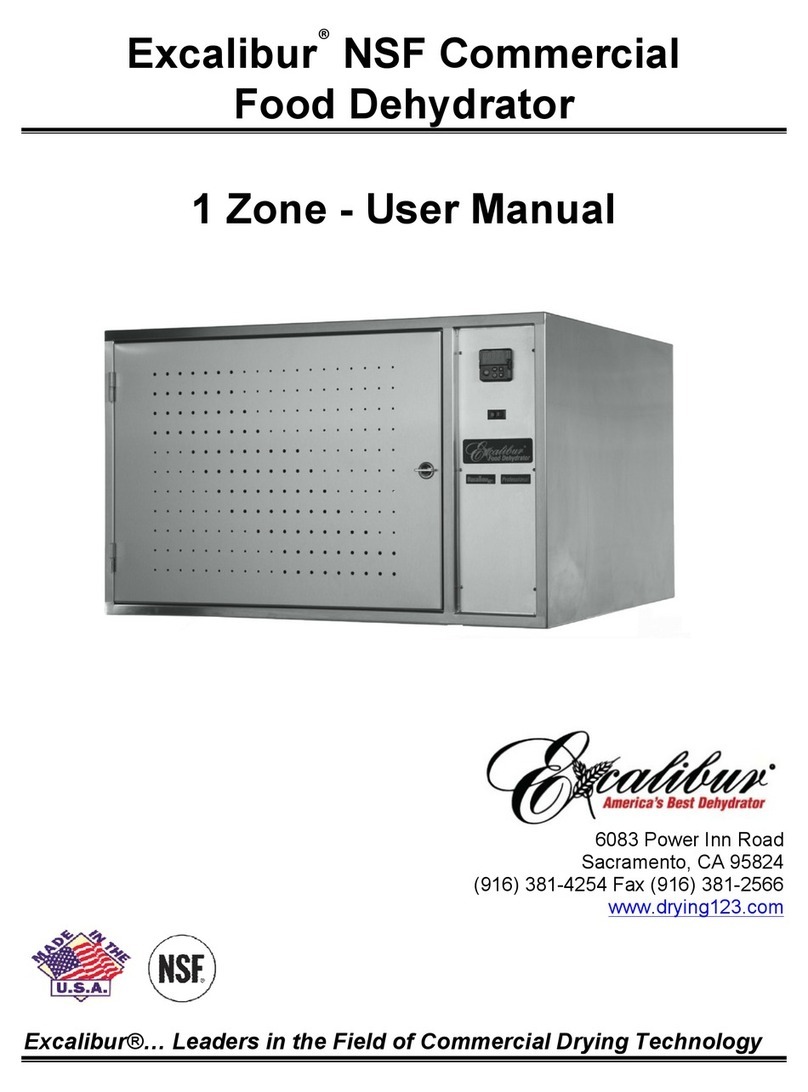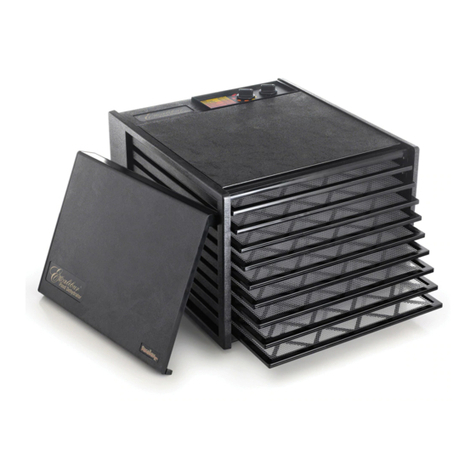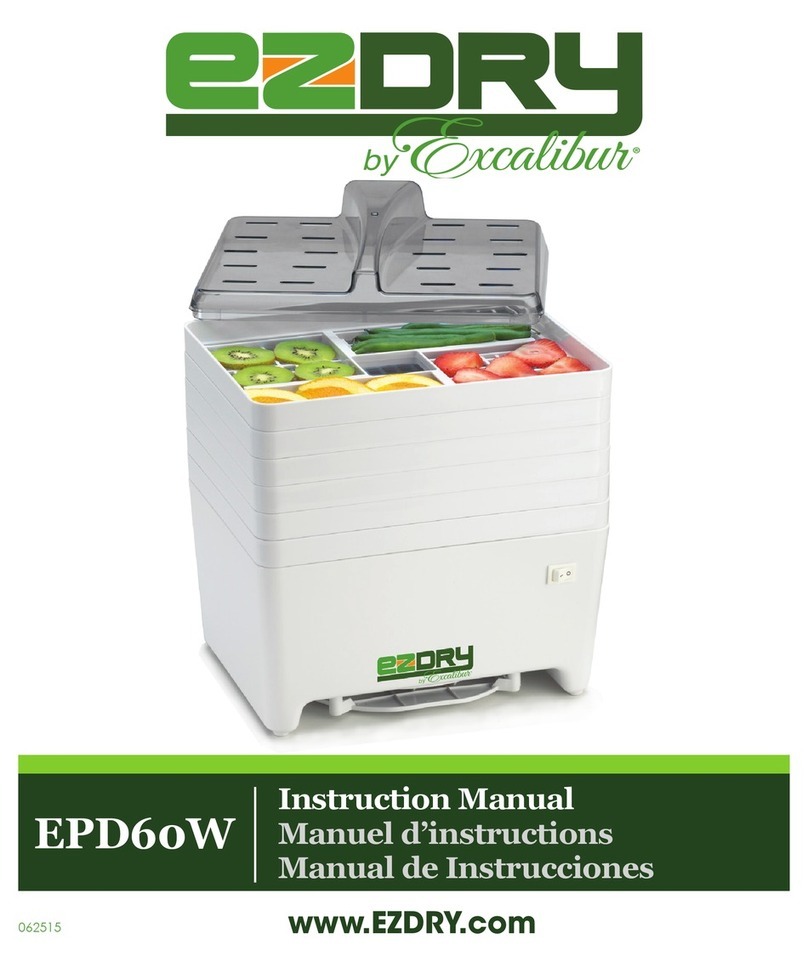
7www.ExcaliburDIY.com
Professional Vacuum Sealer
1. Select the packing bag or container.
Packing bag: choose packing bag with suitable size. Allow a minimum of 1” to 2” of extra
headspace at the top of the pouch to ensure quality, air-tight seal.
Container: choose the container with correct size which can be put into the vacuum
chamber.
2. Select marinate mode and set the marinate time
Press Set button, when Marinate time indicator light is on, the Marinate mode is selected.
Press “ + ” “ - ” button to increase or decrease the marinate time. The time range is 9~99
minutes.
3. Set vacuum degree
Press Vacuum Level, select the vacuum degree needed. There are 6 options: Max
(29.3"Hg), High (29.0"Hg), Medium (27.5"Hg), Low (26.0"Hg), Minimum (23.5"Hg) and
Adjustable. Indicator light will be on according to the selected vacuum degree.
When select the Adjustable option, press “ + ” “ - ” button to set any degree between
23.5~29.3"Hg
4. Put the packing bag or container into the vacuum chamber
Packing Bag:
a. Ensure the height of packing bag with liquid or moist food should be less than the
height of the sealing bar.
b. Lay down the packing bag, ensure the bag mouth should be across the sealing bar.
c. Open the clip in the front of the chamber, clip the underside of the bag mouth and
press down the clip to lock the bag.
Note: the whole bag including the bag mouth should be within the vacuum chamber.
Container: put the container with items inside into the vacuum chamber. If the container
is with a lid, take away the lid to ensure the container is connected with the vacuum
chamber.
5. Working process (Vacuum-Marinate)
a. Close the vacuum lid, machine starts to run and enter into the Vacuum-Marinate mode.
One cycle is for 9 minutes; maximum is 11 cycles (99 minutes). The process is: vacuum—
keep vacuum-release. Vacuum and release time is about 1 minute. Keep-vacuum time
is about 8 minutes.
b. Pump starts to work. The indicator light of the preset vacuum degree starts to blink
(when the preset vacuum degree is reached, the indicator light will be constant
on). The number on LED will count up from 0 to the preset vacuum degree (the
machine will beep when the degree is up to 5 and 19).
c. When vacuum process is nished, machine enters into Marinate mode (keep vacuum).
The marinate time showing in the LED display will count down by 1 minute each. When
the number is counted down to a multiple of 9, the vacuum chamber starts to release
air. After the release nished, repeat the Vacuum-Marinate mode, till the number counts
down to 0. The whole process is nished.
d. When machine beeps three times, the whole working process is nished. Machine will
be back to ready-to-work mode. Display and indicator lights will show accordingly.
Note: during the above b or c process, press Seal button, machine enters into seal mode.
HOW TO VACUUM MARINATE WITH BAG OR CANISTER
